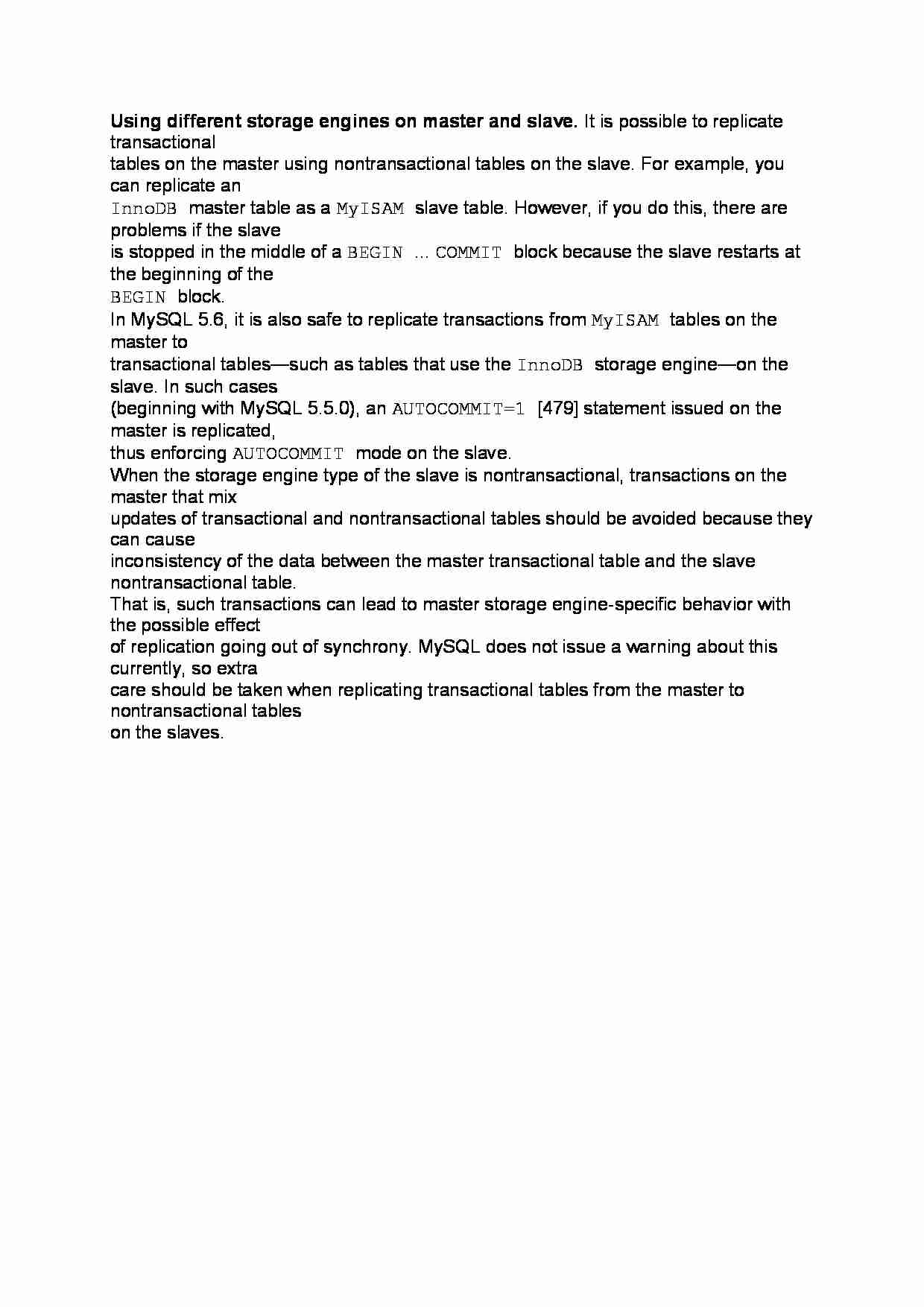
Using different storage engines on master and slave. It is possible to replicate transactional
tables on the master using nontransactional tables on the slave. For example, you can replicate an
InnoDB master table as a MyISAM slave table. However, if you do this, there are problems if the slave
is stopped in the middle of a BEGIN ... COMMIT block because the slave restarts at the beginning of the
BEGIN block.
In MySQL 5.6, it is also safe to replicate transactions from MyISAM tables on the master to
transactional tables—such as tables that use the InnoDB storage engine—on the slave. In such cases
(beginning with MySQL 5.5.0), an AUTOCOMMIT=1 [479] statement issued on the master is replicated,
thus enforcing AUTOCOMMIT mode on the slave.
When the storage engine type of the slave is nontransactional, transactions on the master that mix
updates of transactional and nontransactional tables should be avoided because they can cause
inconsistency of the data between the master transactional table and the slave nontransactional table.
That is, such transactions can lead to master storage engine-specific behavior with the possible effect
of replication going out of synchrony. MySQL does not issue a warning about this currently, so extra
care should be taken when replicating transactional tables from the master to nontransactional tables
on the slaves.
... zobacz całą notatkę



Komentarze użytkowników (0)